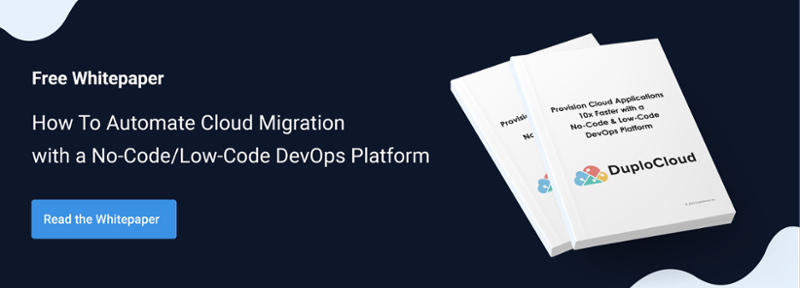Discover how deeper insight can make your infrastructure more efficient and secure
Modern cloud-native application infrastructure allows even smaller, resource-strapped businesses to develop quality products and deliver rapid updates on a global scale. However, without the right approach to infrastructure monitoring, you won’t have enough information to make the best decisions for your product as you build and update.
Here are six infrastructure monitoring best practices to help your team capture and use critical metrics, diagnostics, and event logs more effectively.
6 Infrastructure Monitoring Best Practices
1. Start Monitoring Before You Migrate
If you’re not in the cloud yet, it’s the perfect time to investigate your options and implement an infrastructure monitoring system. By starting now, you’ll be able to gather critical performance data and compare these results against updated metrics once your migration is complete. If you select tools that operate both on-premises and in the cloud, your monitoring system will make the transition far more seamless.
Automation can make your next cloud migration more successful while collecting valuable performance data throughout the entire process. To learn more, read our free cloud migration whitepaper today.

2. Know and Review Your Infrastructure Monitoring Metrics and Logs
Knowledge is everything when it comes to monitoring IT infrastructure and security. Collecting a combination of the following metrics will provide a holistic view of the health and performance of your application and the infrastructure required to run it.
- Performance metrics such as CPU load and idle times, memory usage, and disk utilization rates.
- Infrastructure metrics such as uptime, downtime, and hardware errors.
- Usability metrics such as load times and UX data.
- Security and compliance metrics to detect misconfigurations and adherence to various standards.
- Event logs to capture and analyze user activity
Be sure to review metrics and logs regularly and capture data across the lifetime of your product. Daily snapshots will provide a helpful glimpse into moment-to-moment performance, but weekly, three-month, six-month, or yearly performance charts will help you detect trends in seasonal product usage, performance spikes, and suspicious activity.
3. Choose the Right Infrastructure Monitoring Tool
Modern cloud-native infrastructure is complex and often ephemeral, changing shape and scaling resources as user and application needs demand. While this makes managing infrastructure more efficient and cost-effective, gaining insight into performance data is far more difficult without help than it would be on premises.
Luckily, numerous monitoring tools are available to collect data across all aspects of the product infrastructure, including virtual machines, containers, and even on-premises workloads. Individual tools can capture single data points for each component of your infrastructure and then feed those points into a unified platform to display all of the necessary metrics through a single pane of glass.
Some platforms even let you customize a front-end dashboard, allowing you to access the most pressing performance metrics at a quick glance. With the right tools, you’ll be able to get an instant and up-to-date look at the health of your infrastructure.
4. Automate Alerts to Maximize Effectiveness
The health of your infrastructure can fluctuate constantly, especially if you’re serving a large, global audience. However, it’s unrealistic to expect to be able to keep close tabs on your product at all hours of the day. Setting up alert notifications can help bridge the gap between operating hours, allowing your team to respond to critical situations as they arise.
To maximize the effectiveness of your notification systems, set automated alert conditions that reflect low, cautionary, and high-performance warning thresholds. If you have a service level agreement with clients who use your product, align your alerts with these thresholds to ensure that you meet contractual security and performance obligations.
Finally, set a variety of alarm types across multiple communication methods. For example, low-level alerts may simply arrive via a text message or an email, while an all-hands-on-deck red alert might come via a phone call accompanied by a custom loud alert sound.
5. Stress Test to Hunt Down Weak Points
With infrastructure monitoring set up, you won’t have to wait for a critical incident to see how well it’s working. An infrastructure stress test will put your monitoring tools through their paces, immediately alerting you to whether or not everything is hooked up and collecting data properly. If your monitoring tools are functioning, they’ll start highlighting bottlenecks and other infrastructural weak points. That way, you can fix them before issues arise rather than during an emergency.
6. Regularly Reevaluate Monitoring Processes and Response Strategies
Infrastructure changes as products evolve, malicious actors update their attacks, and performance needs fluctuate throughout the year. As a result, one of the most important infrastructure monitoring best practices is continually revisiting and revising your current processes and strategies to remain effective.
Add “monitoring process review” to your regular internal security and performance analysis tasks. This will ensure that your infrastructure monitoring tools capture all aspects of application and network performance so you’re getting the most accurate and up-to-date information. You can also update your response strategies with the new monitoring processes to mitigate performance and security issues more effectively.
Remember, optimization is an iterative process. Regularly evaluate your monitoring processes to determine what’s working and what isn’t, then make adjustments to address information gaps and improve performance.
DuploCloud Makes Monitoring Infrastructure Easy
Getting deeper insight into your infrastructure doesn’t have to give you a headache. DuploCloud’s DevOps Automation Platform offers advanced threat detection, alerting, and response capabilities, giving you real-time data on your application’s health, security, and resource usage. Plus, continuous monitoring systems notify you when issues crop up, ensuring your product remains compliant with standards such as SOC 2, PCI-DSS, and HIPAA.
Sign up for a 30-minute demo today and discover how DuploCloud can help your business save up to 75% on cloud operating costs.


